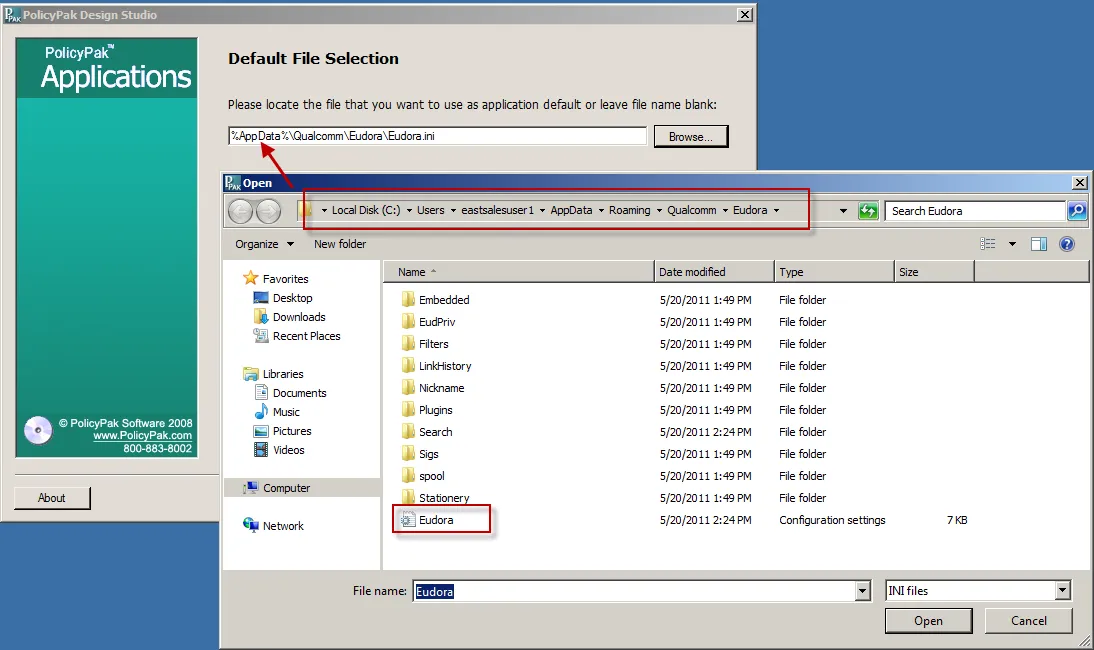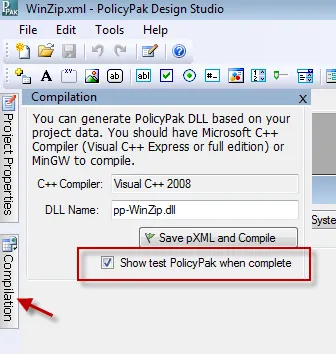Configuration Data in %appdata%
If an application writes its configuration data to c:\, c:\program files, or
c:\program files (x86) then do the following:
Step 1 – Log in as a standard user.
Step 2 – Run the application.
Step 3 – Look for configuration data in the three likely locations:
c:\Users\<username>\AppData\Local\<app>c:\Users\<username>\AppData\Roaming\<app>c:\Users\<username>\AppData\Local\VirtualStore\Program Files (x86)\<app>
Step 4 – Continue to run Endpoint Policy Manager DesignStudio as a standard user and perform all your configurations.
Step 5 – When you run Endpoint Policy Manager DesignStudio as a standard user, you can select
the application's data file within %appdata%, even if you browse using the full path, starting
with C:\. Endpoint Policy Manager DesignStudio will automatically detect if you are within
%appdata% or %localappdata% and substitute the
%appdata% or %localappdata% variables for you as needed, as shown in Figure 99 and Figure 100.

Figure 99. DesignStudio detecting the data location.

Figure 100. DesignStudio detecting the data location.
NOTE: You will not be able to compile your AppSet to a DLL as standard user unless you change
the location using Tools | Options. In the Compilation tab, select a writeable location for "Path
for compiled dlls." By default, Endpoint Policy Manager DesignStudio writes its compiled AppSets to
c:\Program Files\PolicyPak by design so non-administrators cannot utilize Endpoint Policy Manager
Application Settings Manager .dlls on machines.
Therefore, capture all the data from your application first as a standard user, then test your compiling as a standard user. You can see the preview of your AppSet by selecting "Show test Endpoint Policy Manager when complete" within the Compilation tab, as shown in Figure 101

Figure 101. Choosing to preview the AppSet.
Then, when ready, switch to an administrative user to move the compiled Endpoint Policy Manager DLL to
c:\Program Files\PolicyPak\Extensions
(or c:\Program Files(x86)\PolicyPak\Extensions on 64-bit machines) and use the Group Policy Editor
to see your completed AppSet.